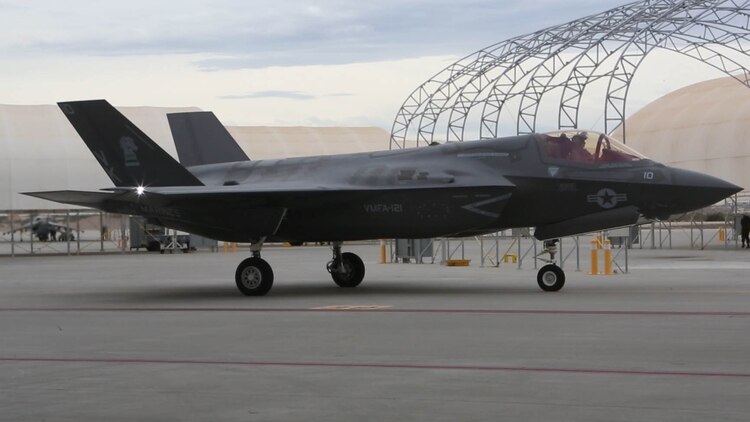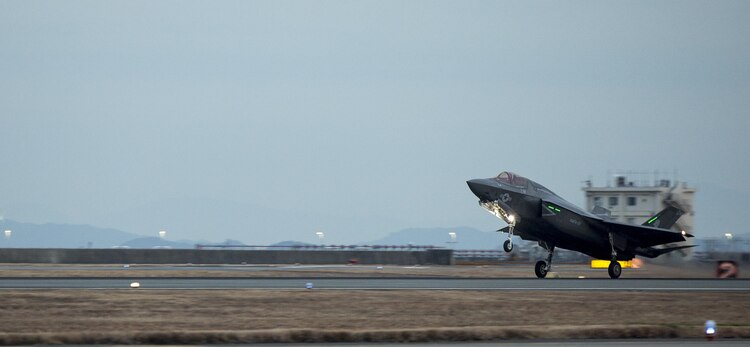TOKYO, Jan. 19 (Xinhua) -- The United States beefing up its military presence in Japan with the first overseas deployment of its state-of-the art F-35 stealth fighter jets to the Marine Corps Air Station Iwakuni in Yamaguchi Prefecture has drawn the ire of locals and comes at a time when regional nerves are already frayed.
The United States has, in the past, made no secret about its plans to pivot a significant portion of its military assets to the Asia Pacific region, but ahead of the inauguration on Friday of President-elect Donald Trump, the arrival Wednesday of the two stealth fighters, as part of a broader plan to assign 16 similar fighters to the base, observers said, is "untimely".
While the future direction of U.S. foreign diplomacy remains unclear, tensions in the immediate region here are less than amiable, owing to Japan's own ambitions to reassert itself militarily in the region, at a time when Japan is at odds with its closets neighbors over its misperceptions of history and territorial disputes.
Japanese Prime Minister Shinzo Abe has recently returned from a whirlwind tour of Pacific Rim nations during which the hawkish leader embarked on a fair amount of military and maritime-linked rabble-rousing, which runs contrary to the image Abe tends to project internationally as the "sorry, not sorry" spin doctor for Japan's deeds in World War II.
He tends to come across as a forward-thinking statesman, who has promised to bring about economic reform to Japan and is known to curry favor from smaller nations with his "earnest" smile and deep pockets for "peaceful" ODA.
Yet under Abe, defense spending here has spiked for a fifth year and along with the U.S.'s F-35's being stationed here, Japan's Ministry of Defense (MOD) plans to purchase at least six Lockheed Martin F-35 Lightning stealth fighter jets and has stated the acquisition is aimed at "intending to help bolster Japan's Air Self-Defense Force (JASDF) achieving superior air-combat capability."
The MOD here has previously stated that the stealth fighter, the Pentagon's most expensive weapons system in history, can be configured for air-to-air engagements, as well as air-to-ground and air-to-sea engagements. It has also referred to the fact that developments have been underway for the fighter to carry next-generation weaponry, including the possibility of a solid state laser and a High Speed Strike Weapon (HSSW), which is a hypersonic missile.
Coupled with the fact that the fifth-generation, multirole, stealth fighter jets have been selected by Japan's MOD as its future mainstay fighter, as the jet offers superior stealth capabilities, second only to that of the U.S. F-22 Raptor, with a radar cross-section roughly equal to the size of a metal golf ball, making it largely undetectable to radars, it comes as no surprise that its arrival here on Wednesday ruffled a few feathers.
Local residents and officials in Yamaguchi Prefecture and Iwakuni City have been up in arms about the potential fallout from hosting the jets, with some locals now in fear that that the highly-capable, yet costly jets, that will cost 85 million U.S. dollars a piece, at least, for an F-35A model delivered in 2020, will make the region a possible target by an anti-U.S. entity or entities.
Officials like Yamaguchi Governor Tsugumasa Muraoka have also voiced their concern about the jet's checkered safety record and the amount of noise created by the jets.
With Japan grappling with a stagnant economy and a demographic crisis as the birthrate drops and society continues to age, many observers here have been flummoxed by the defense ministry's shopping list for fiscal year 2017, which includes a whopping 95 billion yen bill for the taxpayers here for the six new jets.
Not only this, even President-elect Donald Trump has railed against the jet, saying in a recent Tweet that the cost of building the military's next-generation fighter jet had spiraled "out of control" and that he would see that it was reined in.
"The F-35 program and cost is out of control. Billions of dollars can and will be saved on military (and other) purchases after January 20th," Trump wrote on Twitter recently.
But aside from domestic and economic issues, the arrival on Wednesday and the future acquisition of further F-35's has drawn criticism from some of Japan's closest neighbors who clearly remember the last time Japan went on a rampage with its military hardware and are eying its current military buildup with caution.
Of some concern is the fact that the Maritime Self-Defense Force (MSDF) Izumo "helicopter carrier", the largest warship Japan has entered into service since WWII, is clearly a de facto aircraft carrier, as military observers have attested.
The 248-meter vessel weighing 19,500 tons, while being able to accommodate 14 helicopters, is also believed to be able to launch the controversial U.S. Osprey tilt-rotor aircraft, as well as F-35B fighter jets, from its lengthy flight deck.
The "offensive" weapon is in contravention of Japan's pacifist constitution, a key clause of which reads that "land, sea, and air forces, as well as other war potential, will never be maintained."
While Abe is intent on expanding the operational scope of the Japan's SDF having made a unilateral decision at cabinet level to reinterpret Japan's pacifist constitution, and thereafter forcing controversial security legislation through parliament and into law, using his ruling Liberal Democratic Party-led coalition's majority in both caucuses, the public remain staunchly opposed to its revision and the government's expanding military drive and push to revise the constitution.
The constitution, instituted after Japan lost WWII, prohibits Japan from maintaining any war potential or for using force as a means to settle international disputes. It also decrees that the Japanese people forever renounce war.









